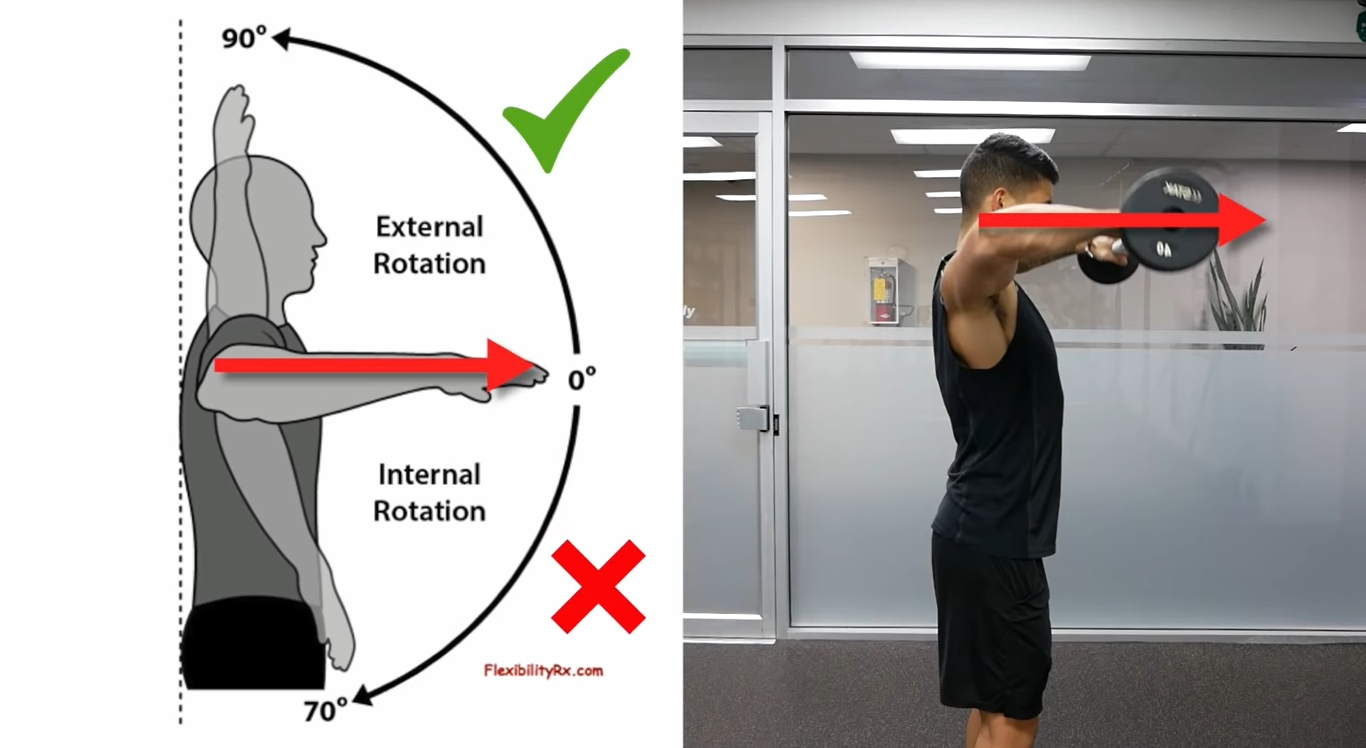According to some, you should not do barbell upright rows at all, because it is an unsafe exercise. But is it really? Well, it depends.
WHY UPRIGHT ROWS?
The upright row is a compound exercise that primarily targets both your front and side shoulder heads. In addition, the trapezius muscle is trained and also the biceps participate a bit.
The upright row is therefore a more complete shoulder exercise than the shoulder press, with which you mainly train your front shoulder heads; the lateral delts are largely out of reach.
Enough reason to put upright rows in your schedule, you might say. With upright rows, however, avoid the variant that you often see people perform at your gym.
MISTAKE: NARROW GRIP, PULLING TOO HIGH
Upright rows are often performed with a narrow grip. Often you see gym goers even holding their hands on the smooth middle part of the barbell. That narrow grip allows you to row the bar up to your neck/chin or even nose. Besides being ineffective, this is also unsafe.
THE DANGER
The shoulder is one of the most mobile joints, but also one of the most complex and therefore very susceptible to injury. Rowing too high will sooner or later result in shoulder complaints such as pain and inflammation of the tendon and bursa. If you’re not careful, the symptoms can become chronic.
Just like the behind-the-neck press, it is therefore better to avoid upright rows if you (regularly) suffer from shoulder problems, or have had them recently.
BETTER: SNATCH-GRIP UPRIGHT ROWS
A larger range of motion (ROM) is not always better, and in this case even unsafe. Limit your ROM with upright rows simply by widening your grip. You have to figure out for yourself how wide ‘wide’ is for you, but for most it is about one and a half times as wide as shoulder width.
When lifting, make sure that the bar does not go beyond chest height and your arms do not go beyond parallel (to the floor). Pull the weight up from your elbows, not your wrists. And make sure your elbows don’t rise above shoulder height in the highest position.
 Grab the bar at 1.5 x shoulder width and make sure that your elbows in the highest position do not exceed shoulder height. (Source: YouTube/Jeff Nippard)
Grab the bar at 1.5 x shoulder width and make sure that your elbows in the highest position do not exceed shoulder height. (Source: YouTube/Jeff Nippard)In the top position of the exercise, also make sure that your hands are at elbow height or even slightly above. This prevents your shoulders from rotating internally, making them weaker. Shoulders are stronger when externally rotated or retracted.
 In the top position, make sure your hands are at elbow height or even slightly above. (Source: Built With Science )
In the top position, make sure your hands are at elbow height or even slightly above. (Source: Built With Science )Research from 2011 agrees that this version of the upright row is safe for most people. Coach and author Lyle McDonald also considers the upright row, in the above embodiment, safe.
EFFECTIVENESS
Snatch-grip upright rows are not only safer, but also more effective. Your biceps do less, and your lateral delts and trapezius muscle do more of the work, as demonstrated by a study from 2013.
ALTERNATIVE
An effective alternative to the barbell version is performing the upright row ‘wide’ with dumbbells or with a cable (rope or handles). These versions are kinder to your wrists.
If you prefer to do the barbell variant, though, and if you have problems with your wrists during this exercise, use an EZ-bar.
INTENSITY
Do not choose excessively heavy weights for the upright row: go for at least 8 repetitions. Always keep 1-2 reps in reserve (RIR), so stay slightly away from muscle failure.
IN SUMMARY
1. The upright row is a compound exercise that targets both the front and middle shoulder heads.
2. If you have healthy shoulders with no injury history, you can safely perform the upright row if you stick to a specific practice.
3. Use a wide grip (1.5 x shoulder width) and do not go beyond shoulder height with your elbows.
4. Keep your hands in the top position at elbow height or slightly above.
5. If necessary, use dumbbells, cables or an EZ bar to spare your wrists.
6. Choose a weight that allows you to do 8-12 reps.
REFERENCES
- http://www.flexonline.com/training/shoulders/close-grip-vs-wide-grip-upright-row
- https://www.t-nation.com/training/tip-use-a-wide-grip-on-upright-rows
- http://journals.lww.com/nsca-scj/Fulltext/2011/10000/The_Upright_Row__Implications_for_Preventing.2.aspx
- https://www.ncbi.nlm.nih.gov/pubmed/22362088
- https://www.ncbi.nlm.nih.gov/pubmed/24077379
- https://builtwithscience.com/exercise-to-avoid/